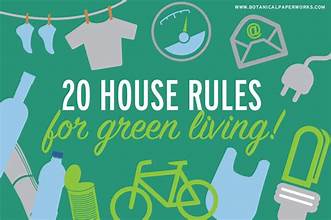
As we move into 2024, the push for sustainable living has never been more critical. With increasing awareness about climate change, environmental degradation, and resource depletion, individuals and families are seeking effective ways to reduce their carbon footprint and embrace a greener lifestyle. This article explores ten essential tips for sustainable living in 2024, offering practical advice on how to make eco-friendly choices every day. By incorporating these tips into your routine, you can contribute to a healthier planet and a more sustainable future.
1. Reduce, Reuse, Recycle: The Foundation of Sustainability
One of the most effective ways to live sustainably is to adhere to the three R’s: Reduce, Reuse, and Recycle. Start by reducing your consumption of single-use products and packaging. Opt for items with minimal packaging or choose reusable alternatives, such as cloth bags, metal straws, and glass containers. Reuse items whenever possible, from repurposing jars for storage to donating clothing and household goods instead of discarding them. Finally, ensure you recycle properly by separating materials according to local guidelines and avoiding contamination of recyclable items.
2. Opt for Energy-Efficient Appliances
Energy consumption plays a significant role in environmental impact. Switch to energy-efficient appliances, such as LED light bulbs, ENERGY STAR-rated refrigerators, and smart thermostats. These appliances use less energy and can significantly lower your utility bills. Additionally, consider investing in solar panels or other renewable energy sources to further reduce your reliance on fossil fuels and decrease your overall carbon footprint.
3. Adopt a Plant-Based Diet
The food choices we make have a profound effect on the environment. Adopting a plant-based diet or reducing your meat consumption can lower greenhouse gas emissions, reduce deforestation, and conserve water resources. Incorporate more fruits, vegetables, legumes, and whole grains into your meals. When possible, choose locally sourced and organic produce to support sustainable agriculture and reduce the carbon footprint associated with food transportation.
4. Support Sustainable Fashion
The fashion industry is one of the largest polluters globally. To combat this, opt for sustainable fashion choices. Choose clothing made from eco-friendly materials, such as organic cotton, hemp, or recycled fibers. Support brands that prioritize ethical labor practices and environmentally friendly production methods. Additionally, consider buying second-hand clothing or participating in clothing swaps to extend the life of garments and reduce waste.
5. Conserve Water
Water conservation is a crucial aspect of sustainable living. Implement simple practices to reduce water usage, such as fixing leaks, using water-efficient fixtures, and taking shorter showers. Collect rainwater for garden use and consider xeriscaping, which involves landscaping with drought-tolerant plants. These measures not only conserve water but also lower your utility bills and reduce strain on local water resources.
6. Minimize Single-Use Plastics
Single-use plastics contribute significantly to environmental pollution. To minimize plastic waste, carry a reusable water bottle, coffee cup, and cutlery. Avoid products with excessive plastic packaging and opt for alternatives made from glass, metal, or biodegradable materials. Additionally, participate in local clean-up efforts and support policies aimed at reducing plastic waste.
7. Embrace Sustainable Transportation
Transportation is a major source of greenhouse gas emissions. Reduce your carbon footprint by opting for sustainable transportation methods. Walk, bike, or use public transit whenever possible. If you drive, consider investing in a fuel-efficient or electric vehicle. Carpooling with others can also decrease the number of vehicles on the road and reduce overall emissions.
8. Create an Eco-Friendly Home
Making your home more eco-friendly involves a range of practices that can significantly impact your environmental footprint. Start by improving home insulation to reduce heating and cooling energy use. Use non-toxic cleaning products and eco-friendly paints to ensure a healthier indoor environment. Implementing a home composting system for organic waste can also reduce landfill contributions and provide valuable nutrients for your garden.
9. Support Renewable Energy Initiatives
Supporting renewable energy initiatives helps drive the transition away from fossil fuels. Advocate for and invest in renewable energy sources, such as solar, wind, and hydro power. Many local and national programs offer incentives for installing renewable energy systems in your home or business. By supporting these initiatives, you contribute to a more sustainable energy future and reduce reliance on non-renewable resources.
10. Educate and Inspire Others
Sustainable living is not just about personal choices but also about creating a ripple effect in your community. Educate friends, family, and colleagues about the importance of sustainability and share practical tips for eco-friendly living. Participate in community events and support local environmental organizations. By inspiring others and working together, you can amplify the impact of your efforts and drive broader change toward a greener future.
Conclusion
Embracing a sustainable lifestyle is a journey that requires commitment and mindfulness. By incorporating these ten essential tips into your daily routine, you can make significant strides toward reducing your environmental impact and contributing to a greener 2024. From reducing waste and conserving resources to supporting renewable energy and educating others, each action plays a crucial role in building a more sustainable future. Start today and be part of the solution for a healthier planet.










